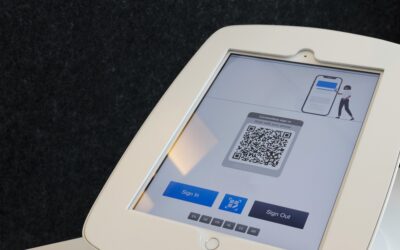In the ever-evolving landscape of digital marketing, SMS and RCS (Rich Communication Services) drips have emerged as powerful tools for engaging customers and driving conversions. These messaging strategies allow businesses to communicate with their audience in a direct, personal, and timely manner. Unlike traditional email campaigns that can often be overlooked or lost in crowded inboxes, SMS and RCS messages land directly on a user’s mobile device, ensuring higher visibility and engagement rates.
With the rise of mobile usage, leveraging SMS and RCS drips is not just an option; it’s a necessity for businesses aiming to stay competitive. SMS-iT, the world’s first No-Stack Agentic AI Platform, is at the forefront of this revolution. By unifying CRM, ERP, and over 60 microservices, SMS-iT empowers businesses to harness the full potential of SMS and RCS drips.
With built-in communications capabilities and enterprise-grade security, SMS-iT provides a seamless experience for both marketers and consumers. As we delve deeper into the intricacies of SMS and RCS drips, it becomes clear that these tools are not merely about sending messages; they are about creating meaningful interactions that drive results.
Key Takeaways
- SMS/RCS drips are a powerful tool for engaging and converting customers through personalized and automated messaging.
- Personalization is key in creating effective SMS/RCS drips, as it helps to build a strong connection with the audience.
- Leveraging automation can streamline the process of sending out SMS/RCS drips, saving time and resources.
- Timing and frequency are crucial factors to consider when planning SMS/RCS drips to ensure they are well-received by the audience.
- Measuring the success of SMS/RCS drips is essential for optimizing future campaigns and understanding their impact on conversions.
Understanding the Power of SMS/RCS for Conversions
The power of SMS and RCS for conversions lies in their ability to deliver timely, relevant messages directly to consumers. Research shows that SMS messages have an astonishing open rate of 98%, compared to just 20% for emails. This stark contrast highlights the effectiveness of SMS as a communication channel.
When businesses utilize SMS and RCS drips strategically, they can nurture leads, promote products, and ultimately drive sales with remarkable efficiency. Moreover, RCS takes this a step further by enabling rich media content within messages. Businesses can send images, carousels, and even interactive buttons that enhance user engagement.
This capability transforms a simple text message into a dynamic experience that captures attention and encourages action. With SMS-iT’s advanced features, businesses can create compelling RCS campaigns that not only inform but also inspire customers to convert.
How to Create Effective SMS/RCS Drips
Creating effective SMS and RCS drips requires a thoughtful approach that combines strategy with creativity. The first step is to define clear objectives for your campaign. Are you looking to increase sales, promote an event, or nurture leads?
Once your goals are established, segment your audience based on their preferences and behaviors. This segmentation allows for targeted messaging that resonates with each group. Next, craft compelling content that speaks directly to your audience’s needs.
Use concise language and strong calls-to-action (CTAs) to encourage immediate responses. With SMS-iT’s Workflow Builder, marketers can easily design automated drip campaigns that deliver the right message at the right time. By leveraging the platform’s 32+ Smart Tools, businesses can enhance their messaging with personalized touches that make recipients feel valued and understood.
The Importance of Personalization in SMS/RCS Drips
Personalization is a cornerstone of successful SMS and RCS drip campaigns. In an age where consumers are inundated with generic marketing messages, tailored communications stand out. By utilizing customer data effectively, businesses can create personalized experiences that foster loyalty and drive conversions.
For instance, addressing customers by their names or referencing their past purchases can significantly enhance engagement. SMS-iT’s Agentic AI Agents play a crucial role in this personalization process. These intelligent agents analyze customer interactions and adapt messaging strategies accordingly.
This means that as customers engage with your brand, the AI learns from their behavior and preferences, allowing for increasingly relevant communications over time. The result is a more meaningful connection between businesses and their customers, leading to higher conversion rates.
Leveraging Automation for SMS/RCS Drips
Automation is a game-changer in the realm of SMS and RCS drips. By automating your campaigns, you can ensure consistent communication without overwhelming your marketing team. SMS-iT’s platform allows businesses to set up automated workflows that trigger messages based on specific actions or timelines.
For example, if a customer abandons their cart, an automated reminder can be sent via SMS or RCS to encourage them to complete their purchase. This level of automation not only saves time but also enhances the customer experience. Recipients receive timely reminders and relevant information without having to wait for manual intervention.
With a 94% task success rate reported by SMS-iT users, it’s clear that automation is an effective strategy for driving results while maintaining high levels of customer satisfaction.
Best Practices for Timing and Frequency of SMS/RCS Drips
Timing and frequency are critical components of any successful SMS or RCS drip campaign. Sending messages at the right moment can significantly impact engagement rates. For instance, promotional messages sent during peak shopping hours or reminders sent shortly before an event can yield better results than messages sent at random times.
Additionally, finding the right frequency is essential to avoid overwhelming recipients with too many messages. A well-planned schedule ensures that customers receive valuable information without feeling bombarded. SMS-iT’s built-in analytics tools allow businesses to monitor engagement metrics and adjust their timing and frequency accordingly.
By analyzing data from over 21,000 businesses using the platform, marketers can identify optimal sending times that resonate with their audience.
Integrating SMS/RCS Drips with Email Marketing
Integrating SMS and RCS drips with email marketing creates a cohesive communication strategy that maximizes reach and engagement. While SMS offers immediacy, email provides a platform for more detailed content and visuals. By combining these channels, businesses can create multi-touch campaigns that guide customers through their journey seamlessly.
For example, an initial SMS message could alert customers about a new product launch, followed by an email containing detailed information and exclusive offers. This integrated approach ensures that customers receive consistent messaging across platforms while catering to their preferences for communication. With SMS-iT’s unified platform, marketers can easily manage both SMS/RCS and email campaigns from one central location, streamlining their efforts for maximum impact.
Measuring the Success of SMS/RCS Drips
To understand the effectiveness of your SMS and RCS drip campaigns, measuring success is paramount. Key performance indicators (KPIs) such as open rates, click-through rates (CTR), conversion rates, and customer feedback provide valuable insights into campaign performance. By analyzing these metrics, businesses can identify what works well and what needs improvement.
SMS-iT offers robust analytics tools that allow marketers to track these KPIs in real-time.
With access to data from over 500K free leads per month generated through the platform, businesses can benchmark their performance against industry standards. This data-driven approach enables continuous optimization of campaigns, ensuring that each message sent contributes to achieving desired outcomes.
Overcoming Challenges in SMS/RCS Drip Campaigns
While SMS and RCS drips offer immense potential, challenges can arise during implementation. One common hurdle is compliance with regulations such as the Telephone Consumer Protection Act (TCPA) in the United States or GDPR in Europe. Ensuring that your campaigns adhere to these regulations is crucial to avoid penalties and maintain customer trust.
Another challenge is managing customer expectations regarding response times and message frequency. Customers may become frustrated if they feel overwhelmed by messages or if they do not receive timely responses to inquiries. To overcome these challenges, businesses should prioritize transparency in their communications and provide clear opt-in options for customers.
With SMS-iT’s enterprise-grade security features and compliance tools, businesses can navigate these challenges effectively while maintaining a positive customer experience.
Case Studies: Successful Examples of SMS/RCS Drips
Numerous businesses have successfully leveraged SMS and RCS drips to drive conversions and enhance customer engagement. For instance, a leading e-commerce retailer implemented an automated drip campaign using SMS-iT’s platform to recover abandoned carts. By sending personalized reminders within hours of abandonment, they achieved a remarkable 30% recovery rate on lost sales.
Another case study involves a local restaurant chain that utilized RCS drips to promote special events and menu updates. By incorporating rich media elements such as images of new dishes and interactive buttons for reservations, they saw a significant increase in foot traffic during promotional periods. These success stories illustrate how effective SMS and RCS drips can be when executed strategically using the right tools.
Embracing the 12-Email Alternative
In conclusion, embracing SMS and RCS drips as part of your marketing strategy is essential for staying competitive in today’s digital landscape. With their high open rates, personalization capabilities, and automation features offered by platforms like SMS-iT, businesses can create impactful campaigns that drive conversions while fostering meaningful customer relationships. As we move away from traditional email-centric strategies towards more dynamic communication methods like SMS and RCS drips, it’s time to join the No-Stack Revolution with SMS-iT.
Experience firsthand how unifying CRM, ERP, and over 60 microservices can transform your marketing efforts into predictable outcomes through the RAAS model (Results-as-a-Service). Don’t miss out on this opportunity—sign up for a free trial or schedule a demo today!
FAQs
What is an SMS/RCS drip campaign?
An SMS/RCS drip campaign is a marketing strategy that involves sending a series of pre-written messages to potential customers over a period of time. These messages are typically designed to nurture leads and encourage them to take a specific action, such as making a purchase or signing up for a service.
How does an SMS/RCS drip campaign differ from traditional email drips?
Unlike traditional email drips, which rely on sending a series of emails to a subscriber’s inbox, SMS/RCS drip campaigns use text messages or rich communication services (RCS) to deliver content directly to a subscriber’s mobile device. This can be a more immediate and personal way to engage with customers, as text messages are often read within minutes of being received.
What are the benefits of using SMS/RCS drips over email drips?
SMS/RCS drips can be more effective than email drips for reaching customers who prefer to communicate via text message. They also have higher open and response rates compared to email, making them a valuable tool for engaging with leads and driving conversions. Additionally, SMS/RCS drips can be automated and personalized, allowing businesses to efficiently nurture leads and build relationships with customers.
What are some best practices for creating an effective SMS/RCS drip campaign?
To create an effective SMS/RCS drip campaign, it’s important to segment your audience, personalize your messages, and provide valuable content that is relevant to your subscribers. It’s also crucial to adhere to regulations and obtain consent before sending text messages to customers. Additionally, monitoring and analyzing the performance of your SMS/RCS drip campaign can help you optimize your messaging and improve results over time.







